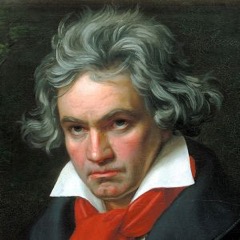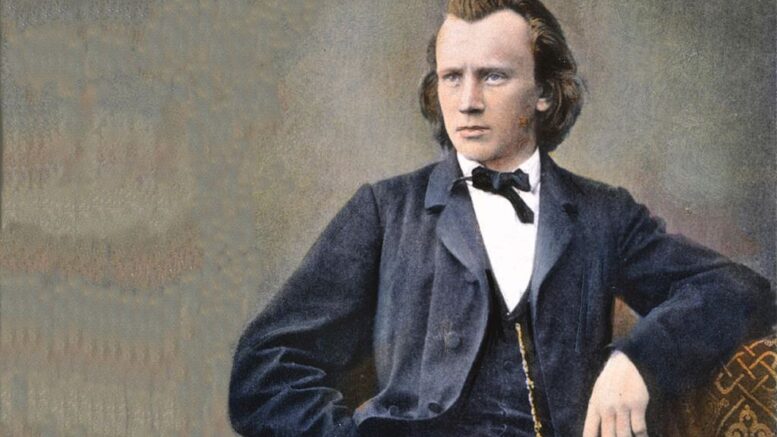Robert Shaw was born in 1916 and died in 1999. He was one of the greatest and underestimated conductors of the 20th century. He commissioned and gave the world premieres of compositions by Hindemith and Copland and was a champion of the choral music of Bartok, Britten and Poulenc. Despite his innate enormous talent, Shaw had no formal musical training. But he hired a great teacher, to tutor him for several years, Julius Herford, a German Jew living in exile in the U.S., having fled the Nazis.
When Shaw was just 29 Arturo Toscanini heard Shaw conduct Beethoven’s 9th Symphony, after which the elderly maestro kissed Shaw on both cheeks, and in tears said “I have been conducting this music for 50 years. This is the first time I heard it truly sung as it should be.” For the remainder of his career, whenever Toscanini scheduled a composition with chorus, he called Shaw. And not just Toscanini. It seems that everyone wanted Shaw to prepare their choruses, including Stravinsky. Koussevitsky invited him to head the choral program at Tanglewood, and William Schumann appointed him in charge of the choral department at Juilliard.
He was the founder and conductor of the Robert Shaw Chorale, a group of young professional singers, with which he made many, many recordings and with which he toured throughout the United States, Latin America, Ukraine, Eastern Europe, and Russia. Shaw was for 11 years the associate conductor of the Cleveland Orchestra and for 21 years, the Music Director of the Atlanta Symphony and Chorus, which he built into first-rate ensembles and with whom he won 14 Grammy awards! Atlanta even constructed an entire performing arts center for Shaw.
Robert Shaw had an affinity with choral music, for Johannes Brahms, and especially, for his Requiem. He conducted it more than 100 times! Shaw first conducted it in 1942 and continued conducting it with many different choruses and orchestras for the next 57 years until the final year of his life. In 1947 he conducted the first recording made in the U.S. of the Requiem, and he re-recorded it with his Atlanta Symphony Orchestra and Chorus in 1983. In fact, as a young budding conductor, I was his personal guest in Atlanta for the rehearsals, performances and recording sessions that week, and it was a unique, amazing experience.
I have been studying Shaw’s numerous writings on the Requiem, his recordings from 1947 and 1983, and recordings of performances he gave with the Cleveland Orchestra and Chorus in 1990 and with the Atlanta Symphony Orchestra and Chorus in 1992.
In the last year of his life, Shaw created his own singable English translation of Brahms’s Requiem, which he was scheduled to record with the Mormon Tabernacle Choir and the Utah Symphony. However, he died a few weeks before, and one of his proteges, Craig Jessop, conducted what turned out to be a beautiful recording.
Johannes Brahms was worried about the increasing nationalism and in 1895 declared to his friends in Vienna: “Anti-Semitism is madness; it is so despicable to me.”
Requiems consist of prayers for the dead, set to music by many composers through the centuries.
The English translation of the original title is A German Requiem, To the Words of the Holy Scriptures.
In the words of Brahms: “I must confess that I would gladly prefer to dispense with the term German, and simply substitute the word mankind instead.” Cory Wikam, in his doctoral dissertation on Shaw and Brahms’s Requiem wrote: “Brahms stated that it was for all humankind. It’s a setting of biblical texts that Brahms selected without regard to any established liturgy. Brahms wishes to address all people, whether Protestant, Catholic or also Jewish, in his avoidance of the name of Jesus Christ, which does not appear at all in the piece, and Brahms also strictly avoided using any scripture that dealt with Christian dogma.”
The only reason the Requiem is in German is because Brahms’s bible was a German translation from the original Greek and Hebrew by Martin Luther and composed the Requiem in the living language of his time and society.
Brahms knew the Bible very well. It contains countless markings and comments in his handwriting.
His requiem derives from 16 passages of scripture. As a child, Shaw had memorized most of the texts selected by Brahms.
Shaw wrote: “Brahms primarily addresses those who are in mourning. From the Robert Shaw Reader, by Robert Blocker: “He referred to it as a human Requiem because he was writing in exploration of a universal human experience. He was more concerned with comforting the hearts of those left to mourn rather than with escorting the departed through the medieval horrors of wrath and judgment. Rather than setting the traditional prayers for the safe journey of the souls of the departed to their heavenly rest, he was concerned with bringing some degree of comfort to the sorrowing who remain.”
The conductor Robert Summer wrote that “many of the movements of this Requiem speak of a secure and blissful eternity and of a resting from the struggles of life in the dwelling place of god. The overall textual and philosophical emphasis is upon man’s acceptance of death which leads to triumph over death. In a letter to his friend Reinthaler, Brahms admitted that he would have preferred calling the work A Human Requiem rather than A German Requiem—a Requiem for all humankind.”
Brahms composed it when he was in his early 30s. The death of composer, Robert Schumann and the death of Brahms’s mother in 1865 may have influenced Brahms’s decision to compose a Requiem.
Lasting approximately 75 minutes, it is his longest composition. It consists of 7 movements or sections. It was written mostly between 1865 and 1866.
The central theme of Brahms’s Requiem is: Blessed are the living.
Because the first movement is about mourning and grieving, Brahms did not include violins in the first movement. It begins with double basses, 2 French horns, violas and cellos.
Shaw said that “the way we learn about Brahms’s feelings about the words he chose from scripture is by learning to speak his language as perfectly and as trustingly as we can.” By learning to speak his language, Shaw meant that by accurately performing Brahms’s music, including the notes, pitches, rhythms, dynamics, and speeds exactly as he composed them, we could through his music, ascertain how he felt about the texts he chose for the Requiem.
Wikam wrote: “In addressing his chorus Shaw wrote: ‘As artists – and as human beings – our concern is not with how we feel about death or the textual imagery of the Human Requiem, but how Brahms felt about these things. We have to believe that Brahms has something to say. We have to recognize that we are his voice. We have to realize that he speaks in terms of intonation and tone colors and rhythms, and that we are privileged to be truly the sound of his mind.’”
Shaw spoke to his choruses about Brahms’s emphasis on consoling the living and cautions the chorus members not to color their singing with their own religious beliefs, but to sing what Brahms wrote as accurately as possible, to let Brahms’s beliefs be known through his music.
In the second movement, what begins as a death march becomes the victorious march of the redeemed into eternity.
The words are from Isaiah: “They shall return with singing unto Zion, coming rejoicing, joyful. Joy everlasting shall crown their heads forever more.
“The grass withers and the flower falls. But the word of God remains.”
The second movement starts with these words: For all flesh is like grass and all the glory of man is like the grass’s flowers. The grass is withered and the flower has fallen off.” This is a metaphor for the life and death of human beings. Brahms set these words to music, first quietly and then very loudly. The 2nd movement contains these words from Isaiah: “They shall possess joy and bliss, and pain and sighing will have to go away.”
In the 4th movement the tenors sing from Psalms: “How lovely are your dwellings, Lord Zabaoth.”
The fifth movement contains an ethereal soprano solo. This was the last section Brahms composed, undoubtedly influenced by the recent death of his mother. “You now have sorrow, but I will see you again and your heart will rejoice.”
The conductor, Helmuth Rilling wrote: “The words are from Isaiah and Sirach: ‘Yea, I will comfort you, as one whom his own mother comforteth… I will see you again.’ These are the most personal words of the Requiem…The most intimate realm of human relationship is being addressed here. She speaks with the voice of a person who has just passed away speaking of the sorrow which her death caused. And then she says ‘but I will see you again’. She sings of the comfort and hope of another world in a very high register. It is Brahms’s vision of a mother who bids farewell in a very personal way.”
In choosing these words “For a short time I had labor and sorrow, and have found great consolation”, Brahms may very well have had his own mother in mind, who had recently died, when he composed this.
In the 6th movement the chorus sings about God’s triumph over human death. It ends with a glorious fugue singing God’s praises.
The words of the last movement are “Blessed are the dead. Though they rest from their labors, their works follow after them.”
Rilling wrote: “The music describes the cheerfulness of Brahms’s conception of the future enraptured life of the deceased. Brahms conveys a transcendental vision of eternal life and seems to experience the words as a reality full of hope.”

